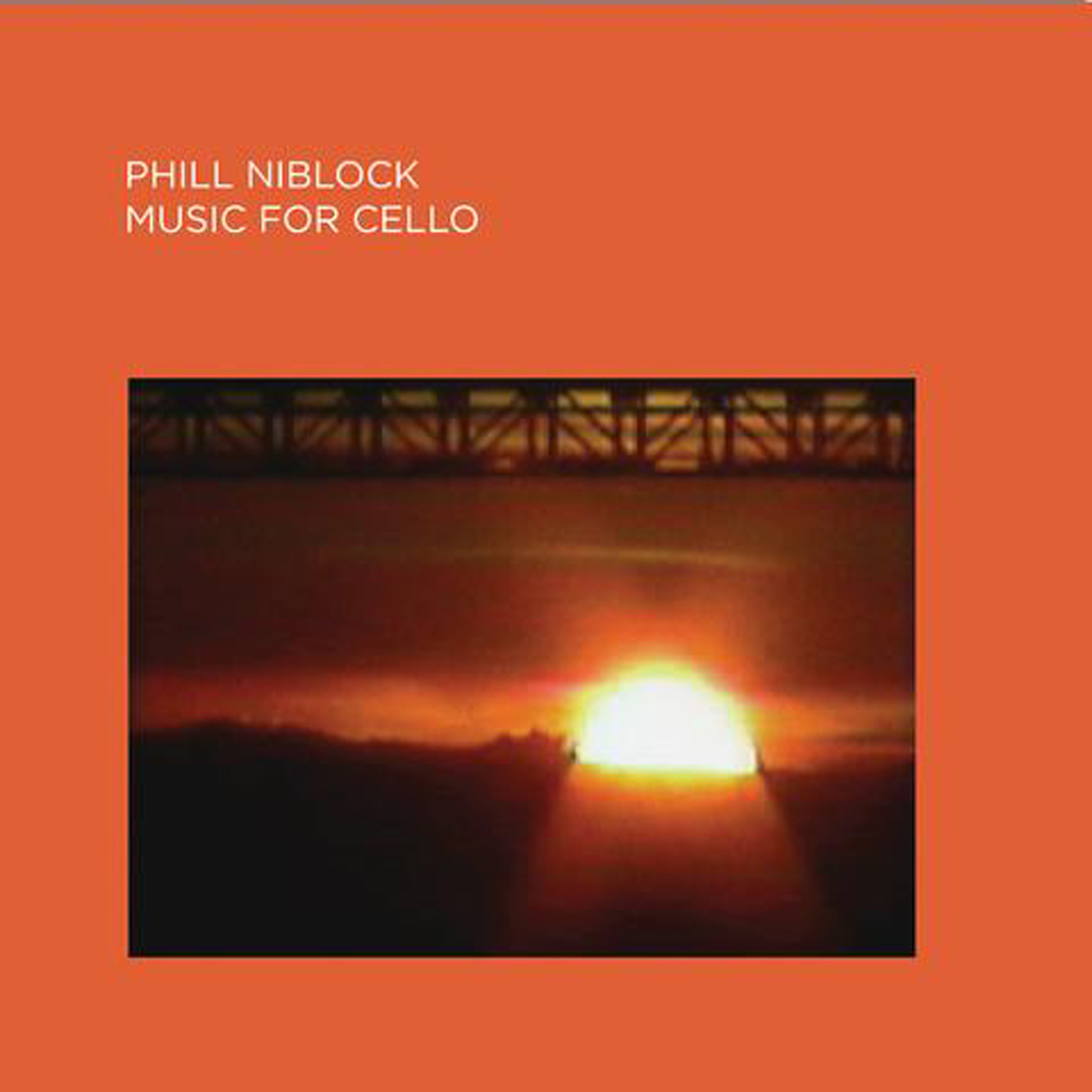 It recently occurred to me that Phill Niblock has a remarkably meager discography for a visionary composer with a body of work that spans five decades. I hesitate to describe anyone's career as undocumented these days, as the experimental music world is drowning in live recordings, unfortunate one-off collaborations, vault scrapings, and unnecessary reissues. Nevertheless, Music for Cello makes a strong case that Niblock probably has quite a backlog of unheard masterpieces wrongfully gathering dust somewhere, as the three pieces compiled here all date back roughly forty years (or more). However, they all sound like they could have been recorded this week. While these pieces chronologically represent quite an early stage of Niblock's lifelong fascination with sustained acoustic tones and the interplay of frequencies, his mastery of the form was already amply evident. In fact, Music For Cello is actually superior to some albums from Niblock's classic run of Touch releases. I am delighted that I finally got to hear it.
It recently occurred to me that Phill Niblock has a remarkably meager discography for a visionary composer with a body of work that spans five decades. I hesitate to describe anyone's career as undocumented these days, as the experimental music world is drowning in live recordings, unfortunate one-off collaborations, vault scrapings, and unnecessary reissues. Nevertheless, Music for Cello makes a strong case that Niblock probably has quite a backlog of unheard masterpieces wrongfully gathering dust somewhere, as the three pieces compiled here all date back roughly forty years (or more). However, they all sound like they could have been recorded this week. While these pieces chronologically represent quite an early stage of Niblock's lifelong fascination with sustained acoustic tones and the interplay of frequencies, his mastery of the form was already amply evident. In fact, Music For Cello is actually superior to some albums from Niblock's classic run of Touch releases. I am delighted that I finally got to hear it.
As some more alert readers may already suspect at this point, Music for Cello consists entirely of cello pieces.In fact, all three were performed by the same cellist (David Gibson) despite a twenty-one-year gap between the earliest recordings and the most recent.The three compositions are presented in chronological order, so the album opens with 1972's "3 to 7 – 196," a work that Niblock notes was his first to feature extremely precise tuning (a sine wave oscillator and frequency counter were used to tune Gibson's cello to exact frequencies).Niblock also notes that the piece is intended to be played at a high volume, as that intensity makes the overtone patterns more prominent.In more practical terms, "3 to 7 – 196" employs a steadily snowballing mass of uncomfortably harmonizing cello drones to weave something that resembles a nightmarishly buzzing swarm of harrowing dissonances.It is quite a tour de force of exquisite discomfort, as the gnarled and oscillating death cloud beautifully ebbs and flows and changes shape as various tones are added and subtracted.Also, it is heavy as hell.
Niblock and Gibson gamely keep the visceral discomfort party going with 1978's "Descent Plus," which presumably earned the "plus" because the duo revisited the piece in 1995 to add several more layers.Like its predecessor, "Descent" is a manifestation of some deep thinking about how frequencies interact and collide.In this case, Gibson played "four cello tones descending one octave over twenty-two minutes, from 300 hertz to 150 hertz," a feat achieved by sloooowly detuning his instrument "without lifting his bow from the strings."The later recordings added several additional drones that did NOT move, giving the glacially plunging tones a static foundation to uncomfortably harmonize with.Unsurprisingly, the piece is another feast of escalating darkness and discomfort, though it is much more of a slow-burner than the previous demonic storm of malevolent buzzing.Instead, "Descent" sounds like a score to a horror film or thriller in which the composer subtly adds some dissonant harmonies to imbue a quiet scene with an ominous sense of tension…then mercilessly continues to ratchet up that tension for the next twenty minutes with little hint of relief or resolution.
That said, the album closes with an unexpectedly lovely departure from its long stretch of roiling dissonance, revealing that the young Phill Niblock did not quite spend ALL of his time dreaming up ingenious new ways to weave slow-motion clouds of billowing horror (just most of it).Naturally, "Summing II" (one section of a larger, mostly unreleased four-part work) has some frequency experimentation at its core, but the essence is that Gibson's drones gradually build into an increasingly rich and immense chord over the course of thirty minutes.I suspect that the album art (portraying a brilliant sunrise) was directly inspired by "Summing," as the piece is a perfect evocation of a fiery orb slowly rising above a dark horizon to burn away the clouds and bathe the landscape in light and warmth.It is also a perfect end to the album, erasing all of the previous tension as it builds into a benevolent, all-engulfing roar.Of the three pieces, I am most enamored of the ugliest and most viscerally intense one ("3 to 7 – 196"), yet all the compositions improbably combine to form a beautifully crafted and coherent triptych (despite their varied origins and the fact that they were presumably never intended to be presented together).Obviously, Niblock continued to hone his artistry and recorded a handful of legitimate drone masterpieces in the decades since these pieces were recorded, but the organic tone of the cello, the elegant simplicity of the compositions, and the physical/raw production of these performances add up to a timeless work that ranks among Niblock's best.Which it absolutely should be, given that Niblock patiently waited more than four decades for all of these various threads to finally come together just right.
Samples:
 
Read More

